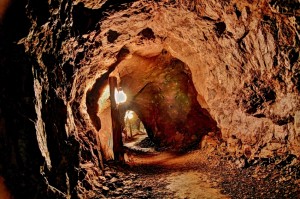Business Risks That Threaten the Mining Industry
 Business Risks That Threaten the Mining Industry
Business Risks That Threaten the Mining Industry
No industry is immune to business risks that threaten its members’ ability to continue operating efficiently and cost effectively, while remaining competitive within their market. It is no secret that the mining industry has been especially hard hit with challenges as it has sought to expand during the past decade. Increased regulation, economic instability, price volatility and political unrest throughout the world are just some of the factors behind the following business risks that are threatening the mining industry in 2015.
Risks that Have Remained Consistent for the Mining Industry
As participants in the mining industry sought opportunities for growth at any cost during the past decade, their overall productivity has significantly declined as a result. While some have tried to address this loss with cost-cutting measures, this has continued to increase losses due to productivity. The enormity of this problem calls for solutions that transform how companies are doing their business overall, including:
- Increasing automation
- Reassessing their mining methods
- Updating and reconfiguring their equipment fleet
- Changing their mine plans
As credit markets tighten, capital allocation and access remain a business risk to both major and junior entrants in the mining industry. While major producers are in the best position for continued growth because of their increased commitment to capital discipline, new or junior entrants to the industry often find their access to capital limited. This inability to raise equity will put many into survival mode or force them to leave the industry entirely. As a result, smaller companies may be forced to:
- Seek to be acquired by larger companies
- Consolidate with other small companies to pool their resources
- Halt exploration, which limits potential business growth
- Institute lay-offs and operate with minimal staff
Emerging Challenges to Watch for in the Mining Industry
The mining industry’s access to water and energy is essential for many of its operations and projects. Rising energy costs and unreliable power supplies are a growing threat. This threat further increases in countries where these resources are in limited supply, including those with emerging economies. This puts the industry at odds with governments and communities who are struggling to function with these limited resources, in addition to their environmental concerns. In order to deal with this risk, the industry needs to:
- Become more sustainable by taking advantage of renewable energy sources
- Switch to more resource-efficient operations that will lessen their environmental impact on communities
- Develop solutions that will reduce their dependence on water
Of growing importance for those in the mining industry is to maintain their appeal to not just their shareholders, but also all stakeholders in general so that they can maintain a social license to operate (SLTO). Increased environmental awareness can threaten project acceptance by means of protests, violence and sabotage in communities that maintain a high SLTO. This can lead to blocking or significantly delaying projects if this license is lost. Therefore, it is important to ensure that the right controls are in place to promote stakeholder acceptance, including:
- Acting responsibly by maintaining commitments and acknowledging the community’s concerns
- Sharing an equitable amount of the benefits obtained from the project with the community
- Addressing employee concerns concerning wages, safety, imported labor and job security
As with any industry, risks are always to be expected, as it is just the nature of doing business. However, the mining industry can benefit by taking a proactive stance against these risks that threaten its existence, instead of remaining in a consistently reactive state.


It is right that every business has two possibilities profit and loss. Risk is attached with every businesses but you need to solve it and make your business success using right tools and position.